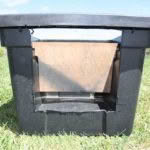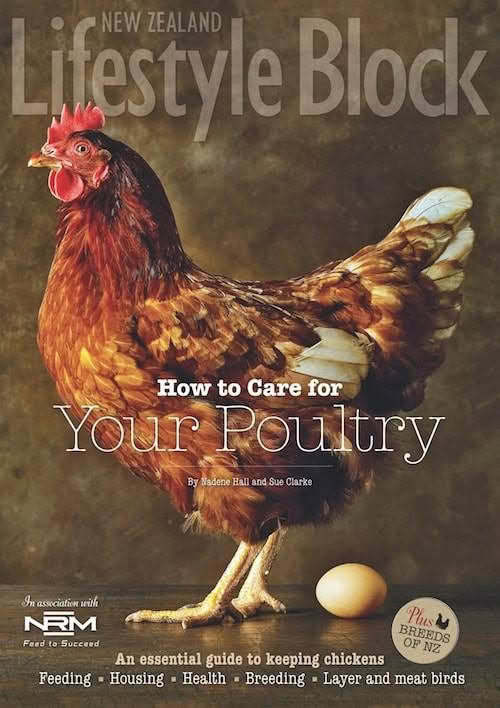Poultry Q&A: NZ Lifestyle Block editor Nadene Hall answers your chicken and egg questions
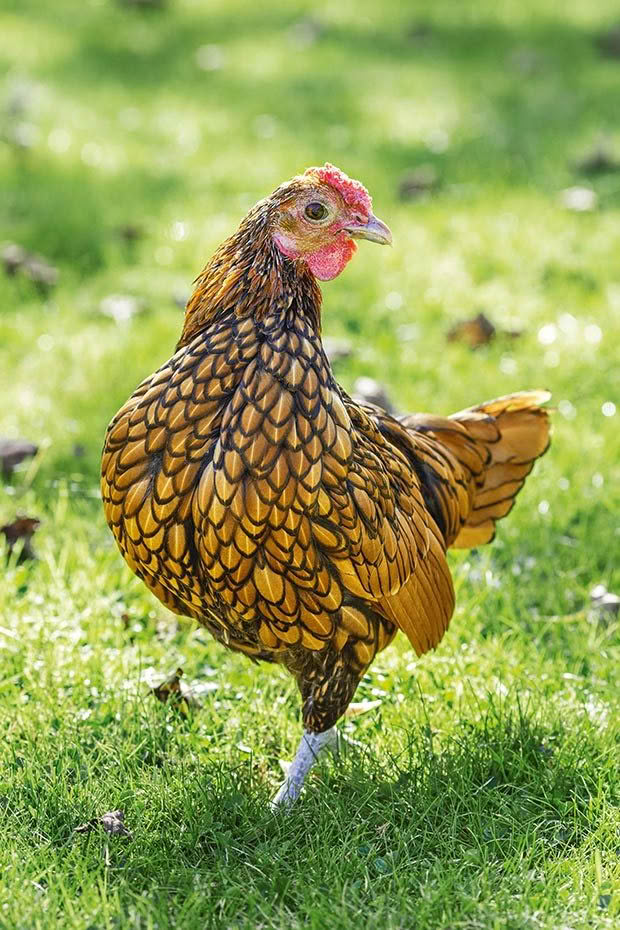
While chicken care is fairly simple – a good coop, good food, somewhere to roam – birds can have curious health and behavioural issues. NZ Lifestyle Block editor Nadene Hall answers your questions from the inaugural (and completely made up) Chicken Week.

Nadene Hall, NZ Lifestyle Block Editor
Question: I want to pat and hug my chickens as people do with their cats. What are some easy steps to achieve this? They are x-battery farm chickens, I have four.
Strangely, they are evenly placed across a scale of “don’t touch me human” to “you can hug me for 10 seconds but then I will realise that this isn’t food and I’m out”. Ideally, they would all be above that level at “You feed me, now where are my pats and hugs”.
Answer: You’d need to take it slowly. It’s much easier if you raise your hens from chicks so they imprint on you, and are accustomed to close contact.
I would try sitting quietly with them in an enclosed area like a run and feed them something extra tasty like little bits of dog roll or cat jellymeat – these are high protein and hens love that. As with any animal, it takes time and patience, and only those with the right temperament will become friendlier.
Be careful getting too up close and personal – there are reports of salmonella contracted by people in the US from hugging and kissing their pet hens. Also, be careful not to inhale any dust – dust in coops and runs contains all kinds of nasties that can infect humans.
Best of luck making friends.

Question: We have Mei and Ming, mother and daughter black Silkie crosses who we rescued four years ago when they were already at least two-three years old. We love them and they’re having a great life.
They stopped laying two years ago and we really don’t care about that. My question is how long approximately do we have left to enjoy their company? I’m hoping they’ll pass of very old age. Our dogs and cats are very respectful of them. They’re hard case characters.
Answer: That’s so lovely! Mei and Ming are getting on in age for hens, which is why they have stopped laying. It’s hard to say, but anywhere from 7-10 years is pretty good, but some chickens have lived longer. Bantams can be pretty hardy as long as they’re getting a well-balanced poultry feed and have a good coop (clean, mite-free, well ventilated, dry).
Question: We chuck kitchen scraps on the compost for our chickens; which foods are bad for them? I’ve seen some conflicting lists.
Answer: Kitchen scraps can be an issue for a couple of reasons. First, for optimal health, chickens need a balanced diet of particular proteins containing specific amino acids, vitamins, and minerals, and most aren’t available in scraps. The main diet – fed first, before anything else – should be a quality, balanced, commercial poultry feed as these are specially designed to contain all the nutrition a chicken requires for good health.
Kitchen scraps should be a treat, ideally fed last thing (eg, afternoon) so you can be sure your birds have eaten what they need. Don’t make scraps more than 10% of a bird’s diet (so for a 2kg Brown Shaver, that’s about 15g each, or so).
The common scraps to avoid:
– any raw meat, as there’s a risk of bacteria;
– anything really fatty (as that can cause fatty build-ups in the liver, often fatal);
– bread, except in tiny amounts;
– milk (poultry are lactose intolerant);
– celery, parsnip, or parsley leaves (which contain a chemical that can inflame the gullet), tomato and potato leaves, rhubarb leaves.
Rhubarb is one where a lot of people think it’s ok and their birds are happy to eat it. However, it’s believed (toxic) oxalic acid levels in rhubarb can fluctuate depending on the time of year, causing gut inflammation (hard to spot) and diarrhoea.
Look out for the September 2019 issue of NZ Lifestyle Block when we have a list of common toxic-to-poultry garden plants and weeds.
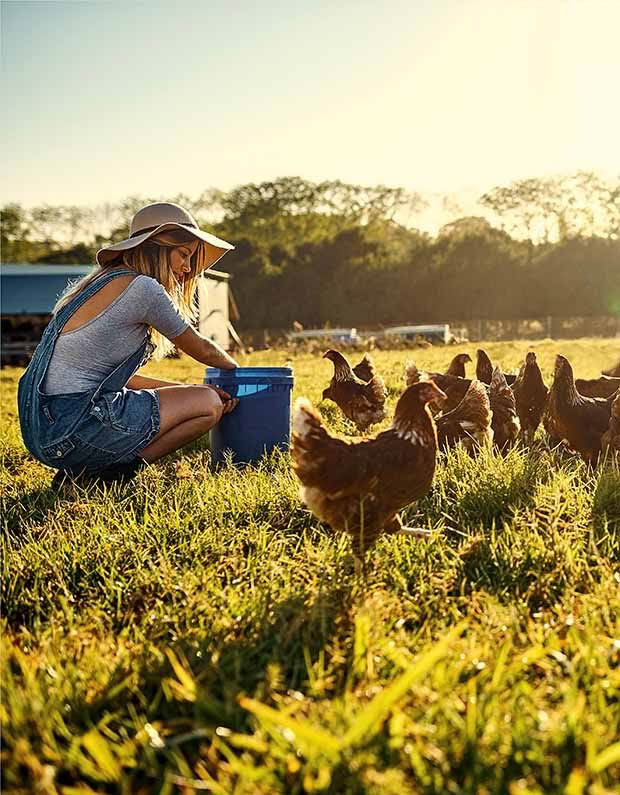
Question: We bought six heritage breed pellets in March and they have not produced any eggs yet. Is it just the cold delaying production?
Answer: That depends on their age. How many weeks old are they now? Heritage breeds, depending on their genetic lines, can be a lot later to start laying than hybrids like Brown Shavers. It can be 30+ weeks for their bodies to mature, so even the longer day length won’t be enough to trigger laying until their bodies have matured. Hybrids, fed properly, will start laying much faster, at around 18-20 weeks.
The cold doesn’t have so much of an effect (unless it’s affecting their health/growth) – day length and age are far more important.
Question: We have just taken in a rescue chicken that someone found in their backyard. We are bringing her into our flock of 7 mixed breeds. She is in the run but in a separate smaller run at the moment. Any advice, as I know it’s not recommended to add one chicken into an already established flock.
Answer: That is a difficult one. It’s possible they’ll never accept her, but things you can do to make it easier are:
– keep her in the smaller run for a week or two so the other hens get used to her;
– introduce her when you can be there to observe and offer crowd control;
– when you do introduce her, make sure there is plenty of things for the rest of the flock to do – scatter some feed or compost scraps, or put a couple of cabbages out for them to peck, give them things to do so they are ‘busy’;
– get some large cardboard boxes – make sure they’re taped up – and have them randomly placed in the run. Out of sight, out of mind works quite well with hens so the boxes are barriers for her to walk or run behind, not something for her to hide in (as the other hens might trap her and beat her up);
– try leaving her in the coop once everyone is roosting for the night – but you might want to be there to observe first thing the next morning to make sure they don’t turn on her.
If things go bad, get her out of there and back into her coop and try again in a week or so. However, it is possible, they will never accept her. If she was attached, an established flock will kill a new hen, especially if it’s injured in a fight.
Question: I have one young hen that sits on a nest of rocks. I can scatter the rocks and the next day she has rebuilt it. I have tried changing the rocks for eggs, or golf balls, and ping pong balls, but she prefers the rocks and is quite defensive over her nest. But why, and is it possible that she isn’t able to lay eggs because she is on the rocks? She’s about a year old, is a Brown Shaver (I think), and she’s had the rock nest for about 6 months.
Answer: That’s really odd behaviour for a hybrid (Brown Shavers, Brown Hylines) which are bred to avoid being ‘broody’, a hormonal state where hens want to sit and hatch eggs. While broody, they stop laying. Obviously, that’s not profitable for commercial farmers so broodiness is not something required in a hybrid hen and it has been ‘bred’ out of them over the decades.
But your hen sounds very broody, almost bantam-like broody (the breed most likely to go broody at the drop of a hat) and I’m wondering if there’s bantam in her bloodlines. To stop broodiness in a hen, you need to lower the temperature of the skin on the breast of a broody hen, which naturally gets warmer to allow her to keep eggs at the right warmth for hatching.
The best way to do this is to keep her in an open cage (like a dog crate) where she can’t snuggle down into a corner (thereby maintaining her warm skin temperature). The crate needs to be kept somewhere airy but warm – often, putting it in the coop is the best option. Have it sitting up on bricks off the ground so there’s cooler air flowing around her whole body, and give her food and water. She might need to stay in there for a few days or longer to convince her hormones that it’s time to settle.
I suspect there’s also a bit of habit mixed in with this. She’s chosen ‘her’ spot and that’s it and it’s a pretty odd spot as broody hens usually choose a nest box or somewhere secluded.
I’d give that a go and observe her behaviour. If she immediately returns to her ‘nest’, you’ll need to try again for a few more days.
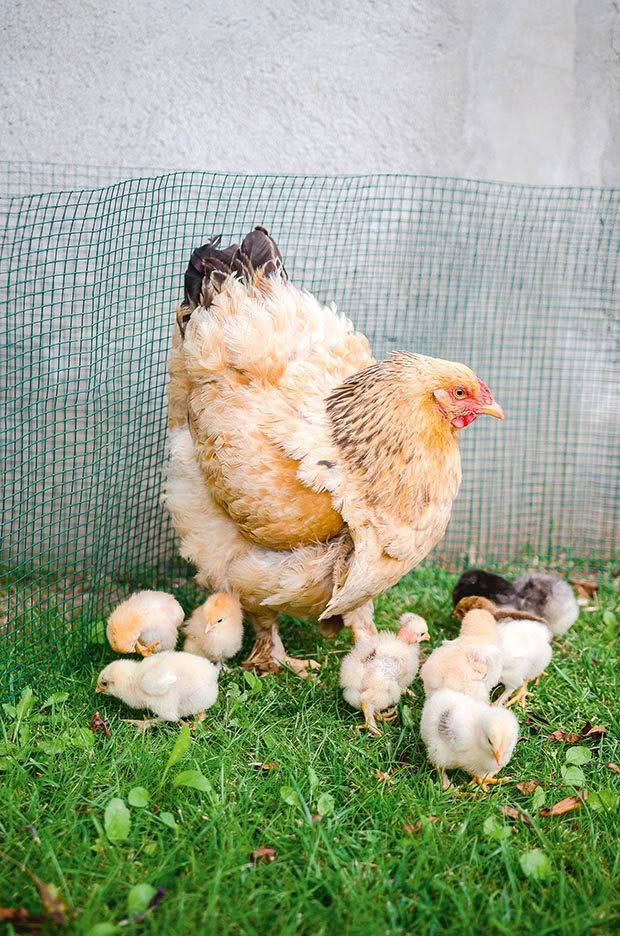
Question: How do I encourage my hens to climb trees? Do I need to build a ladder?
Answer: If they are rescue hens, they’re going to need to be encouraged. They don’t get to roost naturally like they would in the wild, or in a free-range, so they don’t tend to develop muscles or the confidence to roost. You’d probably need to place them up there and let them work it out, but it would again be much easier if you train them from when they are young.
You could build a ramp – don’t make it too steep, and have footholds every 20-30cm so they have something to grip as they go up it.
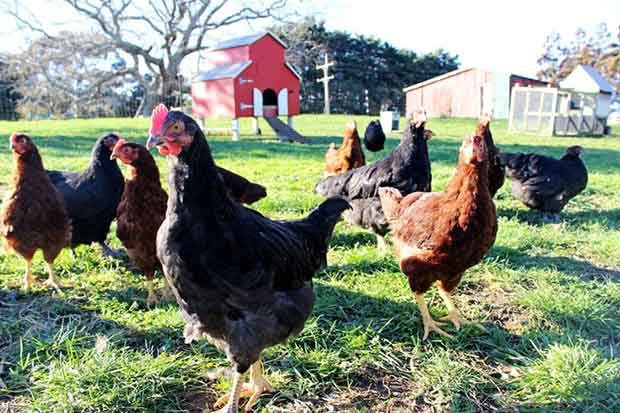
Question: Hi, we have Marek’s disease at our property. We have stopped taking rescue chickens until we can do enough research about the disease. Do you know how long Marek’s disease stays in the environment if there are no chickens present? Is there a vaccine available for adult chickens? Our chickens free-range and roost high in trees so sadly it’s not possible to decontaminate where they roost or the whole area.
Answer: I’ve conferred with NZ Lifestyle Block poultry expert, Sue Clarke, who has worked in the poultry industry for 50+ years, and co-wrote our two poultry specials (How to Care For Your Poultry, Vol 1 & 2).
The Marek’s virus is everywhere and there is a saying, “if your chickens’ breathe, they have been exposed to Marek’s disease.”
I’m assuming your rescue chickens are commercial Shavers or Hylines which have come from a commercial poultry farm? If so, they will have been vaccinated against Marek’s at one day old. However, the stress of moving and adapting to a new environment can sometimes result in them developing the ocular version of Marek’s called ‘gray eye’, where they might go blind.
The incubation period for Marek’s can be up to three months so chicks rarely exhibit symptoms before 10 weeks of age but actually caught it in the first weeks of life.
Marek’s can only be caught by chicks in the first couple of weeks of life, from the virus present in the feather dander, dust etc of older birds which are shedding it. Vaccinated chicks must be kept isolated from older birds and their dust/feather dander for preferably six weeks, until the vaccine has had time to develop antibodies.
I suspect virtually every chicken in the country will show antibodies to Marek’s disease. Some strain/breeds may be resistant, while others like Silkies can be quite susceptible.
There’s no vaccine for older birds as they can’t catch it once over the age of a few weeks. The vaccine must be administered to chicks immediately on hatching and before placing in a brooder- it will become useless if vaccinated chicks are put under a broody hen – and is only available in commercial quantities, at quite some expense, and must be used within a short time of opening the bottle. Plus, you then need to have special brooding areas so chicks don’t come in contact with any other birds.
The incubation period for Marek’s can be up to three months so chicks rarely exhibit symptoms before 10 weeks of age but actually caught it in the first weeks of life. Being a virus, Marek’s needs to be live on something like feathers, faeces or dust. It will succumb to sunlight and frost in the environment.
The only place that should be thoroughly cleaned with a virucide (like Virkon S) is where newly hatched chicks are brooded (from hatching to 6 weeks old).
If you are only bringing in adult birds that were vaccinated as chicks, it’s not going to be Marek’s disease. However, these birds are more likely to succumb to viruses and diseases already in the environment, as they don’t get a chance to build immunity while on a commercial farm. Many viruses and diseases have neurological or other symptoms that could be easily confused with those of Marek’s.
Question: How do you worm chickens other than putting treatment in their water? Our four chickens have a couple of water sources and I would like to worm them but I’m not sure how to make sure they get the adequate amount of worming treatment.
Answer: If you want to use a wormer designed to go in the water, I’d recommend you lock them up in their coop or run for 24-48 hours, so all they can drink is that one water source.
It is possible to syringe a wormer into a chicken, but it’s very easy to accidentally dribble it into their lungs. Unless you have an experienced person to show you how to do it, I wouldn’t recommend it.
You can also ring or visit your vet and ask if they will prescribe an ivermectin-based topical wormer. This is an ‘off label’ use of a cattle drench, only applied to the skin, and is good for external and internal parasites. The dose is 0.1ml (or one drop) per kilogram of bird – the dose for the average 2kg Brown Shaver is 0.2ml, applied to the skin (under the wing is easiest).
Please note, whatever product you use, check the bottle to see if there is a withholding period (usually 7-14 days) on eating eggs or meat from a treated bird. The withholding period for topical ivermectin is usually 10 days (check with your vet for their recommendation).

Question: We have three free-range hens at our kindergarten. They eat all sorts of plants, leftovers as well as dry food. They all lay daily and are generally healthy, fluffy, fat! But one of our chooks has a really ‘messy’ bottom…. do we need to wash her!?!?
Answer: You can if it’s causing her issues, eg hanging off her feathers, attracting flies, and you could also clip away the feathers around her behind (use sharp scissors, and leave a cm or so of the shaft behind).
Do you know why she has diarrhoea? It could be a plant she has eaten that has given her a gut upset. If they haven’t been wormed, that would be a good idea too (worm all of them at the same time).
Question: Where are my hens hiding the eggs? They’re laying them, but I can’t find them! The beggars refuse to live in a coop and instead live in a bay tree, and there is no way of knowing where the eggs are because they could be under our house, or by the train tracks. We clean the house, we put nice bedding in nesting boxes. it’s all dim and comfy, but they have the world at their wingtips and us running around after them.
Answer: Hens are the ultimate egg-sperts in secret nests! You want to look for a quiet, secure spot, often under overhanging grass or flax.
But if they’re not laying where you want them to lay, the best thing to do is to keep them locked in their coop/run until 10-11am – the majority of eggs are laid before then – and get them into the habit of laying in their nest boxes. If you’re at work then, you can buy or (if you’re really keen) make a door that auto opens on a timer.
If your hens were laying in your nest boxes, but have stopped, it’s possible there’s a red mite infestation (which attack and suck the blood of sitting hens so the hens leave the building, literally).
If you can smell ammonia, your hens will too (they are very sensitive to it), so a good cleanout would be needed. It’s a good idea to do this on a regular basis so it remains the most attractive nesting area.
It’s also possible the nests just aren’t ‘comfy’ enough, so your hens have found a better option. The ideal nest box is 30cm x 30cm, with a roof so it’s dim/dark inside, with a lip at the front they can snuggle behind it, and a deep bed of wood chips (which also help to repel bugs and keep eggs clean). If you need to get the nest box darker, you can use a dark fabric to hang down in front of the nest box entrance, like a door curtain for flies).
Question: How do I stop my girls from being so noisy in the morning when they think it is breakfast and I think it is time to sleep in?bedtime.
Answer: I can’t help you with that one! Hens are creatures of habit and if they’ve learned to be noisy, and then they get breakfast, I don’t know of any way to change it. My only suggestion would be to lock them up overnight so they can’t get close to the house. Sorry about that.
Question: I have an egg eater, what can I do?
Answer: Egg-eating is a difficult one – it might be one (or more) of your hens had a taste of a broken egg and has since learned to break and eat them. If so, it’s a hard habit to break.
There’s no behavioural way you can stop a hen eating eggs. You can remove the offending hen so she can’t access where the eggs are laid (if you can work out which one it is).
The other option is to have ‘roll-away’ nests. These are nest boxes with a bottom at a slight angle – when an egg is laid, it gently rolls away under a backboard where the hen can’t reach it. You can buy them, or you can make them yourself.
I used a fish bin (see above), and screwed a board inside with a gap so the egg could roll back and under it. This bin has a lid so it stays quite dark. It’s also easy to remove, clean, and replace the litter which is a nice bonus. I put a small piece of wood under the front to create the rollaway angle.
Question: We treat the chickens with ivermectin or similar for worms – what else does ivomec cover? Scaly leg mites?
Answer: Topical (applied to the skin) ivermectin at 0.1ml per kilogram of bird will treat internal parasites and most external ones. The research into ivermectin on scaly leg mites says it can help but won’t eradicate an infestation. It’s best to use it in combination with an application of vaseline to the legs – apply a thick coat every day or two for 10 days, which suffocates the mites.
Red mites don’t live on the bird – they crawl on to feed overnight, then leave after a couple of hours – so you need to make sure your coop is treated regularly so you don’t get a large red mite infestation.
Question: My hens are aged between five months and two years, with a couple of older hens (all Shavers). They are pecking each other raw and have no feathers or very little feathers. They peck each other continuously until they hit flesh and bleed. I have sprayed their home, checked for mites but cannot find any. They are free-range from lunchtime until they roost in their run every night before I close them in. The hen house is very large with plenty of places to roost at night.
They get grit, a layer meal is supplied, and they can help themselves during the day from a feeder.
Answer: It’s possible this is a mix of behavioural issues and a lack of the correct (or not enough) protein in their diet. It may have started by accident when new pin feather emerged during a moult – if they get damaged and bleed, birds will peck and it’s possible this developed into a habit. Also, the young ones being picked on by the older ones can lead to feather loss and a taste of blood. Is separating the bullies an option?
To remedy it, I would be letting them out early in the morning and encourage them to get as far away from each other as soon as possible. Confinement, especially with bright light coming in, can cause a sort-of ‘cabin fever’ and that is when the aggression will start. The anticipation of being let out can also lead to more activity pecking and dominating.
Knowing what feed they are on and protein levels would help. A deficiency of essential amino acids, namely lysine and methionine, can lead to hyperactivity, feather pecking and a search for animal protein, eg blood. Poultry needs at least 130g+ of feed each per day, ideally provided ad lib so they can eat what they need when they need it.
I would recommend adding some animal protein to their diet, like pet mince, a high protein dog roll like Possyum, or even blood meal from a garden shop in a separate trough or sprinkled over their normal feed.
However, if it’s also learned behaviour, splitting up the dominant hens from the lower ranking ones while they regain the protein they need and grow their feathers would also help a lot.
Question: What came first, the chicken or the egg?
Answer: Good question! Science says the egg, laid by a bird that was very, very close to, but not a chicken.
GOT A QUESTION?
Got a chicken or general lifestyle block question? Email NZ Lifestyle Block at info@thisNZlife.co.nz or message us on Facebook.
Learn more about poultry from the experts with special editions How to Care For Your Poultry, Vol 1 and 2, available here.
MORE HERE:
